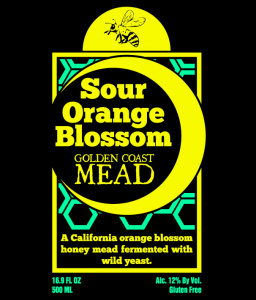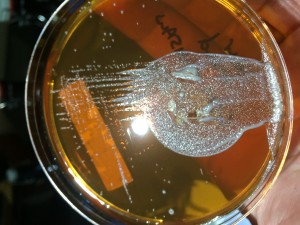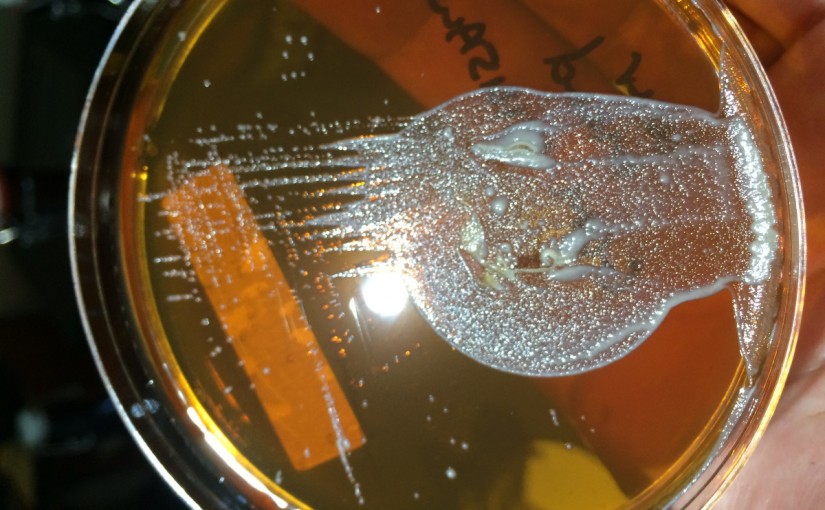 Frank Golbeck from Golden Coast Mead joins us in Episode 26 to discuss sour meads. If you aren’t familiar with sours, read through the complete show notes and the and check out the Additional Reading links before diving into the episode. Frank walks us through GCM’s sour mead discovery, including the happenstance development of their first sour mead. Its results kicked off what they now consider a souring program, part of their permanent lineup into the future.
Frank Golbeck from Golden Coast Mead joins us in Episode 26 to discuss sour meads. If you aren’t familiar with sours, read through the complete show notes and the and check out the Additional Reading links before diving into the episode. Frank walks us through GCM’s sour mead discovery, including the happenstance development of their first sour mead. Its results kicked off what they now consider a souring program, part of their permanent lineup into the future.
You might wonder what the title of this episode has to do with sours. Well, if you’ve had a sour and need to clear your olfactory glands to taste something new, Frank has just the tip. Listen in to find out what it is!
Right click here to download the mp3 directly.
Drinks in this Episode:
Allen and Tysen: Sour Orange Blossom and Savage Bois (Golden Coast Mead)
Links in this Episode
- Follow Golden Coast Mead
- Sign up for their newsletter
- No, seriously, Sign up for their newsletter! They’ve started an open source project where they plan to publish all of their recipe and process information. Truly a treasure trove for all you mead lovers out there!
- Real Brewer’s Yeast
- Mazer Cup International. Get your entries in now! They are filling up quickly.
Introduction to Sour Mead and Souring Organisms:

In “normal” fermentations, those most commonly encountered in the wine and beer realm, the yeast Saccharomyces cerevisiae is responsible for 90+% of the fermentation kinetics. Wines are often finished with a malolactic fermentation (helps stabilize the meads turning malic acid into lactic acid), but generally it holds true that cerevisiae is the primary microorganism responsible for the finished product.
Sours are made with a whole new set of organisms, sometimes in conjunction with S. cerevisiae but often with mixtures of just the following microorganisms. These organisms comprise both the bacterial and yeast realms, and each provides their own unique flavors in the process. This isn’t a complete list of the organisms that might ferment your mead, but it is a good start to understanding the process.
Souring Bacteria
Lactobacillus
Lactobacillus is responsible for creating the lactic acid present in your sour meads. Lactic acid presents a tart, tangy character to your finished beverage.
Lactobacillus prefers temperatures in the mid-to-high 90s F ideal for growth, and can be used pre-fermentation to maximize the acidity level before your standard yeasts take over and to create your alcohol. Consider dosing with Lactobacillus for the first 24 to 48 hours of your fermentation prior to pitching a standard yeast. At approximately 8% abv, Lactobacillus stops its fermentation.
The Lactobacillus L. Delbrueckii strain is ideal for sour fermentations, fermenting a single substrate, glucose, into lactic acid and carbon dioxide.
Pediococcus
Pediococcus produces lactic acid, but unlike lactobacillus it does not create carbon dioxide. It produces diacetyl above the palate threshold of humans, but in strong fermentations the diacetyl should not be present in your finished mead. It also ferments poorly in the presence of oxygen.
Pediococcus forms a ropy, hazy layer on the top of your fermenting must. It is commonly used to ferment cabbage in sauerkraut fermentation. Like Lactobacillus, Pediococcus ceases fermentation around 8% abv.
Acetobacter
The Acetobacter species oxidize ethanol to produce acetic acid, otherwise known as vinegar. Acetic acid tastes stronger than lactic acid, and is only palatable in small quantities.
Acetobacter cannot grow without oxygen present, and will generally survive in alcoholic mixtures up to 18% abv.
Souring Yeast
Brettanomyces
Brettanomyces, often referred to as just “Brett,” is responsible for flavors often described as “horsy” or “mousy.” Brett was discovered in 1904 at the Carlsberg Brewery while researching the spoilage causes, giving it the Greek name for “British fungus.”
In practice, Brett forms what is known as a pellicle, a thick white coating, on the top of your fermenting vessel. This pellicle allows the yeast to make use of atmospheric oxygen while simultaneously preventing the oxidation of the must being fermented beneath it.
There are at least five commonly recognized species of Brett: B. anomalus (B. claussenii), B. bruxellensis (B. abstinens, B. custersii, B. intermedius, B. lambicus), B. custersianus, B. naardensis, and B. nanus. B. bruxellensis is the yeast you will most often find associated with wild and sour beers.
Saccharomyces
Saccharomyces, while not responsible for many of the souring flavors, are often still present in sour mead/beer concoctions.
Additional Reading
- Wild Brews: Beer Beyond the Influence of Brewer’s Yeast, by Jeff Sparrow
- How to Make Sour Ale: An Inquiry, by Raj Apte
- Milk the Funk‘s wiki page on the Wild Yeast and Bacteria Scientific Publications
- Lambic, Sour, and Funky Mead Making – Pt 1, by David Doucette on Home Brew Talk
- Lambic, Sour, and Funky Mead Making – Pt 2, by David Doucette on Home Brew Talk
- Sour and Funky Mead Making Pt 3, Blending, by David Doucette on Home Brew Talk
- Blending Sour and Funky Mead Pt 4: Berliner Style Meads, by David Doucette on Home Brew Talk
- For general microbiology questions or to source that bug the yeast houses don’t keep, search here: The American Type Culture Collection

Quite a treasure trove of information–thanks! I’ve done a couple wild fermentations of ciders (it’s pretty easy to get started, as various yeasts live on the skins of apples), but haven’t tried wild yeasts or bacteria with mead yet. Perhaps it’s time…
I’ve only used wild yeasts I harvested in my yard. It didn’t taste like any bacteria made it in, and I haven’t tried any of the sour blends available yet.
When you start, be prepared to segregate the sour equipment from the rest of your stash (esp with plastic fermenters). Some of these bugs are hard to kill!
I was there on Dec 26th for the Galley Grog release. I’ve never had a sour mead before – not anything like I imagined. I’ve had a few sour beers before but this was way better and more complex. They had a packed tasting room with lots of smiling faces and excitement all around. Maybe that is just part of the “wild” Frank is working so hard to perfect!
The staff was very nice and talkative while they filled up a case box of bottles for me to drive back to CO … how did that happen???
I can imagine it would be busy. Frank’s enthusiasm is contagious. And the case of bottles? That’s just the benefit from having had so much fun!